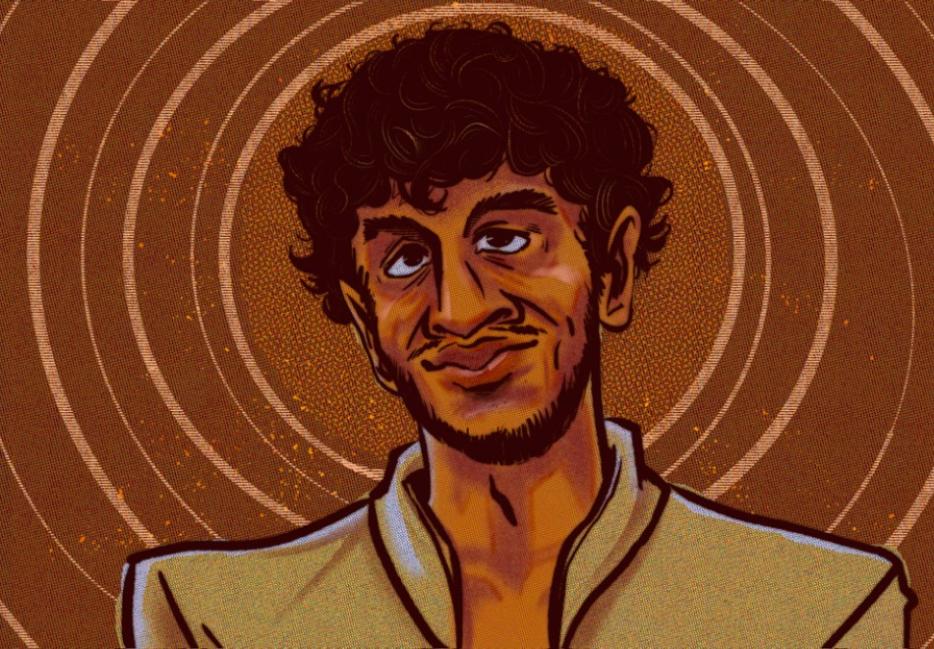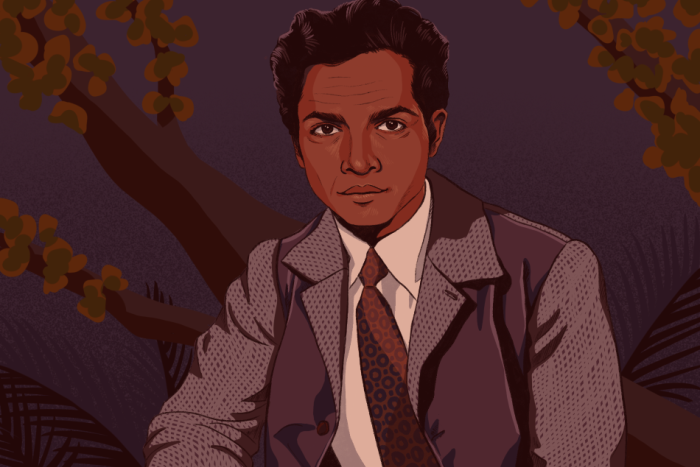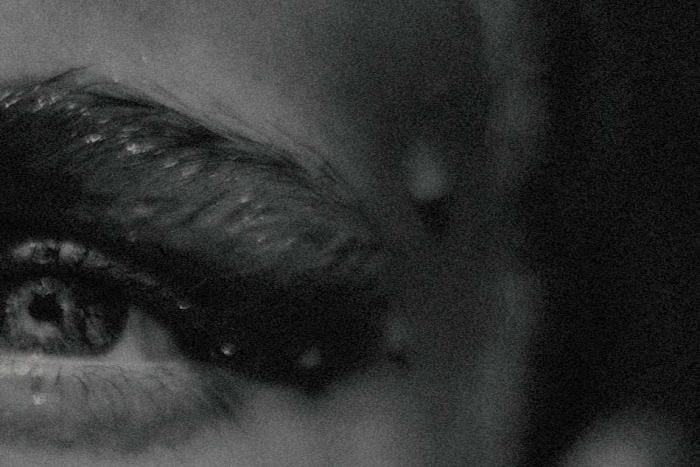Welcome to Wayward Watching, a column on the seen and unseen in film.
I once dated a woman who could never sit through movies about separating couples. Silly comedies about adolescent heartbreak were fine, but anything more sober, where the estrangement seemed to suggest something ineffable about the relationship, was out of the question. Maybe she felt nervous about what these films might tell her about her own love life.
I remember wanting to show her Richard Linklater’s Before trilogy once—she’d liked his later film, Boyhood—but she wanted to know beforehand if the protagonists stay together throughout.
“I can’t tell you,” I said. “That’s kind of what the story is about.”
“In that case, no thanks,” she replied. “I can’t risk my feelings for a film.”
For a long time I thought I couldn’t risk my feelings watching movies about death. I grew up in a family passing through a torrid phase. By the time I was ten I had lost one aunt, two uncles, both sets of grandparents; by twenty, I had lost a school friend, another uncle and a criminally young cousin. You never get used to funerals, nor do you ever learn what to say or feel in their wake, but there was a time in my childhood when holidays were synonymous with the fusty sensation of showing up at another one. My mother would have moved in with the mourning family a day or two earlier, and one of her colleagues or an older cousin—never my father—would end up escorting me and my sister there. It is always a brilliant morning in my memory when we show up at the house of grief. The rooms are inordinately packed with women in saris eating, talking, sweating, passing around stacks of paper plates and bowls. I’d scour the living room, then the bedrooms, for the garlanded portrait, of the aunt who had taken me and my sister along to the zoo the last time she visited us, or the uncle who could make me instantly cry by popping his own fingers and whispering, “If you don’t drink milk, your bones will creak louder than this.” I remember always staring at the photograph, refusing to blink until my eyes welled up, just in case the person leaped out of the frame.
After his mother’s death, the novelist Julian Barnes wanted to see her corpse. In his memoir Nothing To Be Frightened Of, Barnes writes that his older brother, a philosopher, opted out of a visit to the undertaker’s, but Barnes was prompted “more by writerly curiosity than filial feeling.” I have to admit my affinities are more with the philosopher here; certain closed rooms just don’t pique my writerly interest. I must have been ten or eleven when I first glimpsed a dead body onscreen, in a stray scene from a Hindi film on TV. A man had just lost a friend, I think, and his wife or girlfriend was consoling him at the foot of the hospital bed. A nurse was wrapping every inch of the body with white bandage rolls in the same room. All at once the man pushed the nurse out of the way, lifted up the corpse with his hands and ran out the door.
Growing up in Indian cities, I was used to the sight of funeral processions slowing down traffic on roads. A friend remembers the two of us seated together on a school bus once when four men passed by our window holding up a wooden stretcher. They were apparently chanting a prayer aloud, when I interrupted them with a question: “Excuse me, did you do the postmortem?” The mourners didn’t reply. Back then, I thought that meant I should keep repeating the question. The men were visibly incensed, according to my friend. Who knows what would have happened if our bus hadn’t sped away at that moment?
Those who know me now might recognise the insolence—put me in a roomful of strangers and I’ll end up being the one who gets kicked out for not letting others speak—but anyone with a passing knowledge of Bollywood will understand why a kid might ask about the postmortem at a funeral. For too long Hindi scriptwriters chickened out of portraying most things messy onscreen: sex was always the skippable coda to a vigorous dancing contest between the protagonists, handily dispensed with the image of a butterfly settling on a rose bush, or two sunflowers rubbing up against each other in the wind. And death invariably arrived on wheels in a hospital stretcher with a nurse, dressed in matching headgear and uniform, welcoming you in a dank sunless corridor. Behind her, a door flanked by two light bulbs, red and green, on top. The camera pans up to the letters on the sign above: POSTMORTEM. Now and again a policeman appeared, lazily trotting behind the body with a baton in one hand. Or the scene might fade into an ECG wave, which was funny because you grow up and learn that the human heart stops beating before an autopsy, never after.
What happens when you’re no longer alive? To me, death still retains the essence of what the anthropologist Claude Lévi-Strauss once called a “floating signifier”: a word so “void of meaning” that it can mean whatever you want it to mean. At sixteen, I remember watching Abbas Kiarostami’s Taste of Cherry late one night and wondering if in the afterlife you get to share cigarettes with a genius filmmaker on set. I often stayed up playing Need For Speed in those days, and Kiarostami’s protagonist, Mr. Badii (played by Homayoun Ershadi) also seemed to be initially engaged in a game for sorts: he keeps circling the hills of Tehran in a Range Rover, through dusty roads that resemble wartime trenches in sunlight, looking for someone who will bury him. He picks up a Kurdish soldier, then an Afghan apprentice imam, and later a Turkish taxidermist, shows each of them the lonely grave he has dug for himself under a tree, and pleads with them to shovel up some soil on the site the next morning, because that very night Badii plans to swallow one sleeping pill too many and lie down in that spot. Only the taxidermist agrees, because the money Badii is offering will go a long way in treating his bedridden child. He nevertheless counsels Badii against going through with the suicide: “Don’t you ever want to drink water from a spring again? Or wash your face in that water? Do you want to give up the taste of cherries?”
For a movie with no background score, the last twenty minutes, beginning with the moment when Badii first wavers in his decision, should count as among the most symphonic sequences ever cut on film. Seconds after he has dropped off the taxidermist at his workplace, Badii is stopped in his car by a woman who hands him a camera and requests him to take a picture of her with a male friend. The sight of the couple triggers something frantic in Badii. He turns the Rover back midway through an incline—you can hear a pedestrian cursing him a couple of times—and hurries back to the taxidermist’s office. For a moment you wonder if Badii will abort his plans. The camera pans to a view of the city from the taxidermist’s office: streaks of aircraft contrail piercing the sky, children queuing in formation on a volleyball court, the last bits of crimson daylight filtering into the valley. You might think that Badii is witnessing his last sunset on earth, except that Kiarostami’s silent imagery feels so scruffy and alive, full of what the New York School poet James Schuyler once summed up as the “the va et vient of life.”
Moments after Badii closes his eyes in his grave, Kiarostami famously fades into a grainy behind the scenes video of himself calling out to a troop of marching extras, every last one of them dressed in army paraphernalia, for a sound check. Then Ershadi walks up ever so casually to the director and passes him a cigarette, as though he hadn’t been the actor playing Badii all this while. To a teenager the stylized denouement rang impossibly cool. But lately I’ve come to concur with the film critic Roger Ebert’s 1998 assessment that to portray the crew onscreen is a “tiresome distancing strategy to remind us we are seeing a movie.” However, Jonathan Rosenbaum mounted an exhilarating defence to Ebert’s objections in his own review of the film:
The most important thing about the joyful finale is that it’s the precise opposite of a “distancing effect.” It does invite us into the laboratory from which the film sprang and places us on an equal footing with the filmmaker, yet it does this in a spirit of collective euphoria, suddenly liberating us from the oppressive solitude and darkness of Badii alone in his grave…Kiarostami is representing life in all its rich complexity, reconfiguring elements from the preceding eighty-odd minutes in video to clarify what’s real and what’s concocted . . . Far from affirming that Taste of Cherry is “only” a movie, this wonderful ending is saying, among other things, that it’s also a movie.
Each time I read these sentences I’m reminded that so much of what we perceive as our true feelings are sometimes just a concatenation of phrases we’ve picked up from elsewhere, that adulthood has its own inevitable distancing effect on what we observe and think. Yes, you can’t help smiling when you watch the crew fool around between takes, but does the laughter really “liberate” us from the melancholia of Badii’s fate? There is an element of wishfulness baked into Rosenbaum’s reading (as if we’ll ever be on an equal footing with Kiarostami!) and the passage is ultimately undone by its sophistry. You could make a case for retaining the jagged ending without asserting that the production scenes are “joyful” or intense at all. Then again, Rosenbaum would have let himself down as a writer if he didn’t dream up a more ideal version of the movie in his sentences. “So much of your life is sheer wordplay,” the woman who wouldn’t watch Before Sunrise once told me. “It’s kinda sad that you writers actually end up believing half the things you type.”






